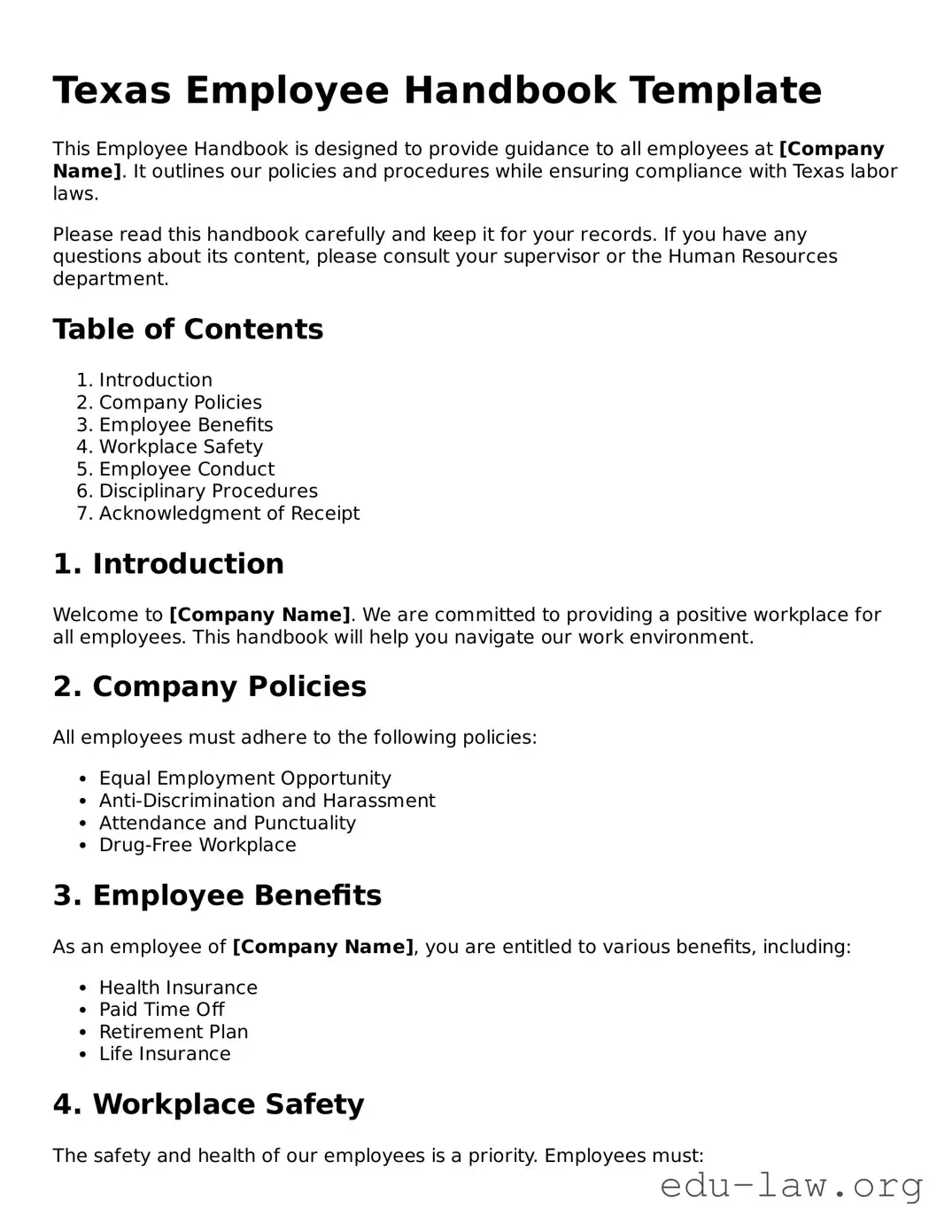Texas Employee Handbook Template
This Employee Handbook is designed to provide guidance to all employees at [Company Name]. It outlines our policies and procedures while ensuring compliance with Texas labor laws.
Please read this handbook carefully and keep it for your records. If you have any questions about its content, please consult your supervisor or the Human Resources department.
Table of Contents
- Introduction
- Company Policies
- Employee Benefits
- Workplace Safety
- Employee Conduct
- Disciplinary Procedures
- Acknowledgment of Receipt
1. Introduction
Welcome to [Company Name]. We are committed to providing a positive workplace for all employees. This handbook will help you navigate our work environment.
2. Company Policies
All employees must adhere to the following policies:
- Equal Employment Opportunity
- Anti-Discrimination and Harassment
- Attendance and Punctuality
- Drug-Free Workplace
3. Employee Benefits
As an employee of [Company Name], you are entitled to various benefits, including:
- Health Insurance
- Paid Time Off
- Retirement Plan
- Life Insurance
4. Workplace Safety
The safety and health of our employees is a priority. Employees must:
- Report unsafe conditions immediately
- Participate in safety training
- Follow all safety protocols
5. Employee Conduct
Conduct that disrupts the workplace or violates company policies will not be tolerated. Employees are expected to:
- Treat others with respect
- Follow instructions from supervisors
- Maintain a professional appearance
6. Disciplinary Procedures
Violations of company policy will result in disciplinary action, which may include:
- Verbal warning
- Written warning
- Suspension
- Termination
7. Acknowledgment of Receipt
All employees must sign the acknowledgment form below to confirm receipt of the employee handbook:
I, [Employee Name], acknowledge that I have received and read the [Company Name] Employee Handbook and understand the policies and procedures outlined within.
Signature: _____________________ Date: _______________
